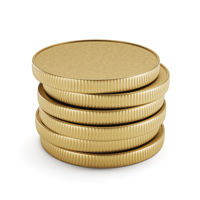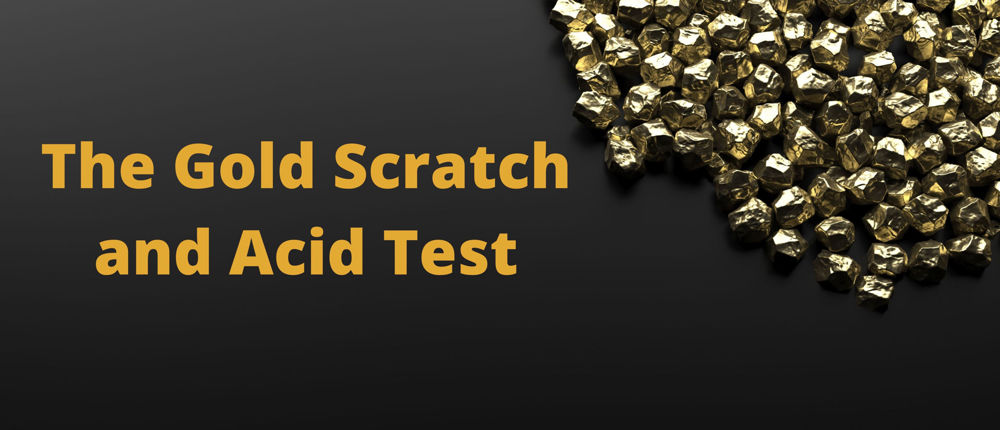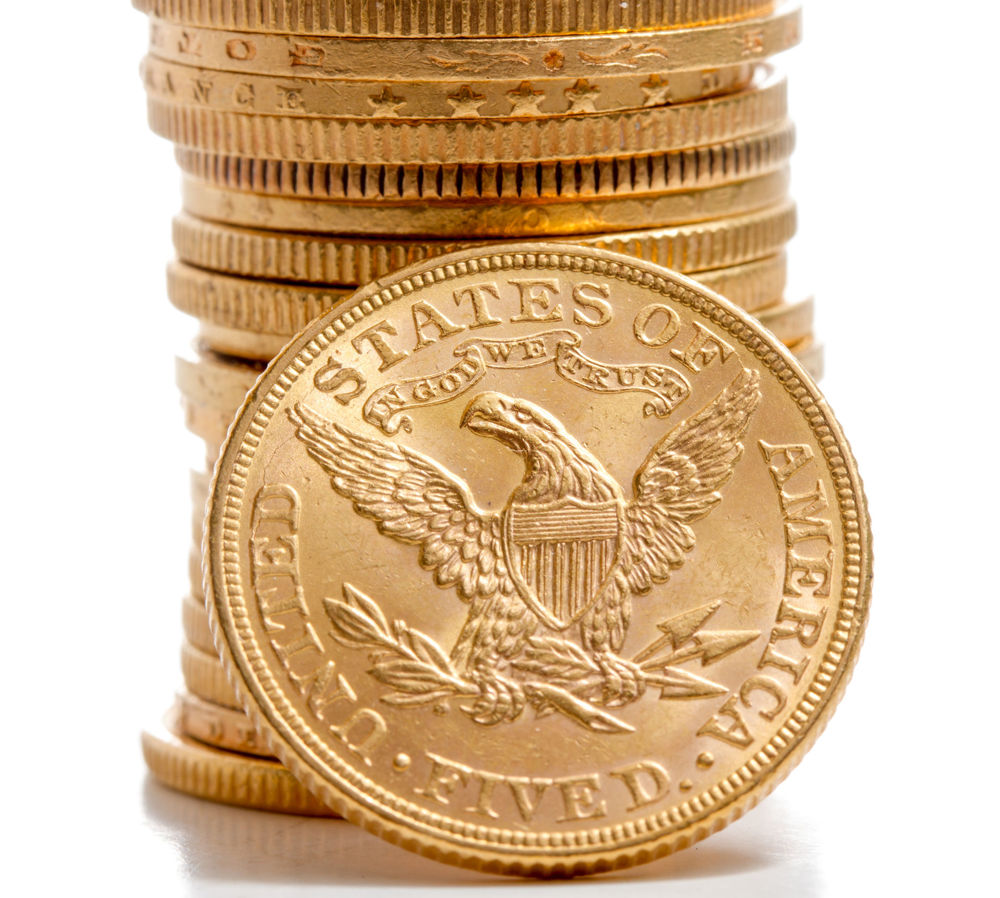Posted on September 24, 2021


There might not be anything more important than the purity of a gold coin — the purer the gold, the higher its value. Therefore, testing the purity of gold is something that all coin collectors and numismatic enthusiasts should know how to do. And one of the best ways to test the purity of gold, in particular, is through the scratch and acid test. These tests are the perfect combination of accurate and easy for anyone to do on their own.
These are two different tests. Sometimes, the scratch test alone is sufficient. When that’s not enough, the acid test comes into play.
Gold is one of the strongest, most durable precious metals around. When rubbed against a hard surface, gold will deposit a yellow streak that varies in color based on its purity. Therefore, you can test the purity of a gold piece by comparing this streak to the mark left by gold with known purity.
The scratch test goes as follows:
This is an invasive but not destructive test. Although a trace amount of gold is left behind on the touchstone, it’s unlikely to affect the measurable weight of your gold. However, an over-aggressive approach will damage your sample. So don’t go overboard.
Because of its durability, gold is incredibly resistant to corrosion and doesn’t tarnish when exposed to most acids. Therefore, you can test a gold piece by exposing it to varying strengths of nitric acid which will help determine the purity.
Obviously, you don’t want to submerge your sample in acid and risk damage, so instead, you can test any piece of gold by scratching it against a touchstone and test the purity of the scratch mark rather than the sample itself. You can use this test on both gold coins and gold jewelry.
Here’s how:
You’ll need a nitric acid solution geared to the believed purity of the gold piece. For instance, there are nitric acid testing solutions for 10-karat, 14-karat, 18-karat, etc.
 Why the need for a test?
Why the need for a test?Gold has been a valued commodity for generations. For the past 2,500 years, there has always been a need to test its quality and purity. Because gold refiners use varying production methods, gold can be produced at different purities.
With different degrees of purity, buyers need a method to test the purity of gold before agreeing on a purchase. Instead of biting gold to determine its authenticity, as people did during the California Gold Rush and in old western movies, the scratch test is much less destructive than a bite (assuming buyer or seller has a touchstone and touchneedle).
Testing gold through the scratch test was the primary way a buyer and seller could agree on the price and sale of gold. (One of the reasons so many refiners provide assay results and tamper-resistant packaging is to eliminate the need for purity tests like these.)
The gold scratch test was used in ancient times, as far back as 2,500 years ago. At the time, the acid test was not yet discovered. Instead, gold was scratched on a touchstone and compared with another piece of gold with a known purity — known as a touchneedle. Gold buyers compared these two scratches for color and similarity to determine whether the gold piece was authentic.
Archaeologists have uncovered touchstones and touchneedles that help to confirm the test’s existence thousands of years ago. It’s unclear how accurate these early tests were, but they at least provided some sort of insight into the purity of gold.
Gold miners implemented the acid test many decades later. During the 1800s gold rush in the United States, gold miners updated the test to determine in real-time if the gold they were mining was authentic. These miners used the same touchstone methodology but incorporated acid to get a more accurate result.
Potential gold buyers continue to use the acid test today as it is one of the most accurate at-home tests that anyone can perform independently. To help with this process, consumers can purchase a gold test kit with pre-made nitric acid bottles based on karat purity and a touchstone.
Today, gold dealers and buyers use other tests that don’t require scratching gold on a touchstone. Gold owners prefer non-destructive testing methods to the acid test as they are less invasive and provide even more accurate purity results.